This was a short and sweet gardening project that used some nice recycled ship lap redwood and 1 inch thick boards. The redwood came from an acquaintance that was moving and had to release his collections of scavenged wood bits. This was a perfect project that solved the problem of gophers, and, increased the food area in a non-productive strip of sandy soil that nothing favored growing in.
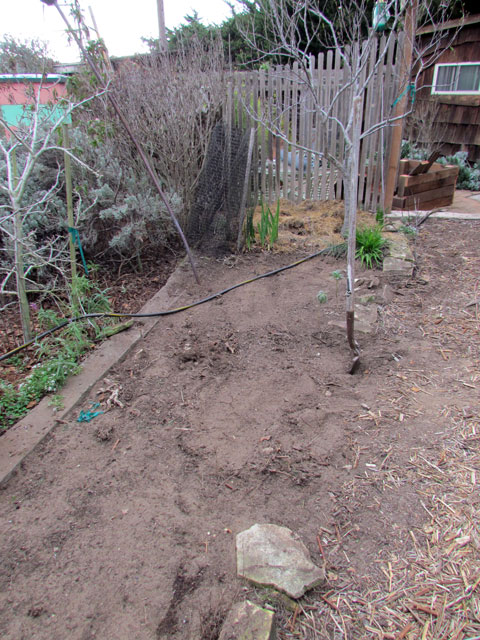
By creating two raised beds the raspberries could be planted in good house compost fortified soil. Watering needs would be less and the raspberries could be curtailed from spreading into other areas of the garden. There was a concrete footing along one edge that was a remnant from a previous dweller on the property that would also help contain the berries in this narrow strip.
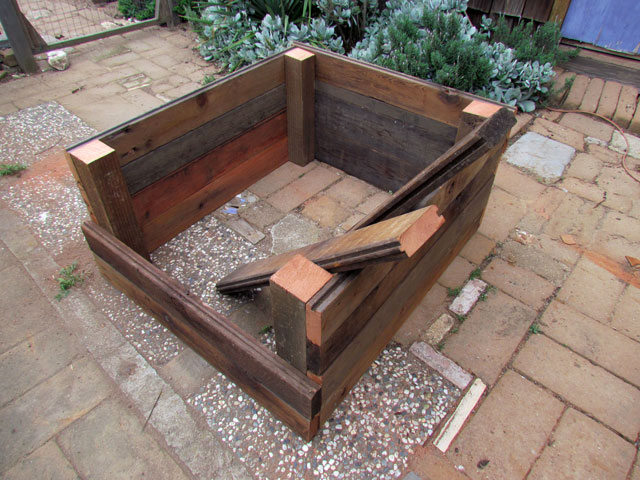
Most of the lumber was already cut to a 4 foot size. Only a little bit of cutting was required to assemble two raspberry beds. These beds are approximately 3′ x 4′ in size and 2′ deep. The screws and galvanized wire were the only costs to this project (besides labor and visioning).
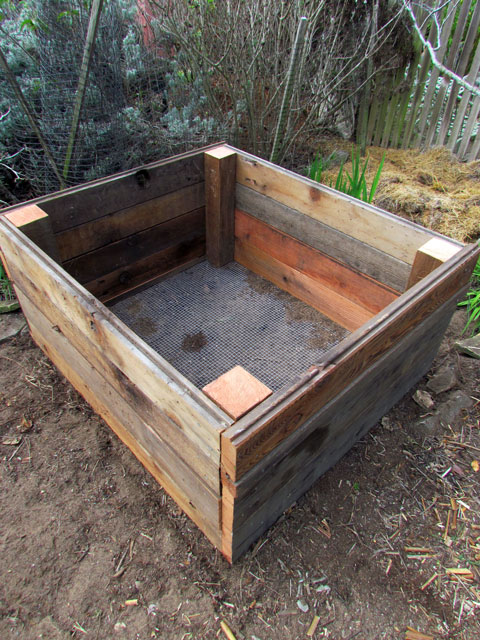
The raspberry starts were Heritage variety, which is a fall bearing type that will give a small crop in the spring with heavier fruiting in fall. This is a perfect growing habit for the local climate as the raspberries don’t get fried by summer heat (not in the summer fog!) but get that nice clear skies push in September, October and November.
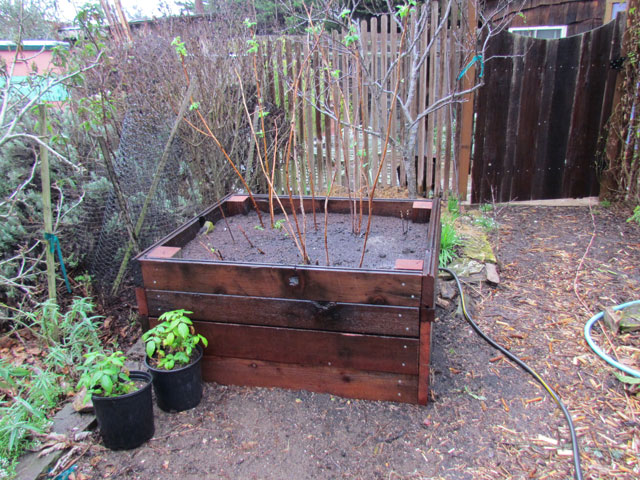
Some of the plants were dug up from another garden where they were escaping the bed. All of the planting was done in late February when plants were still a bit dormant – although not as dormant as, say, Montana!
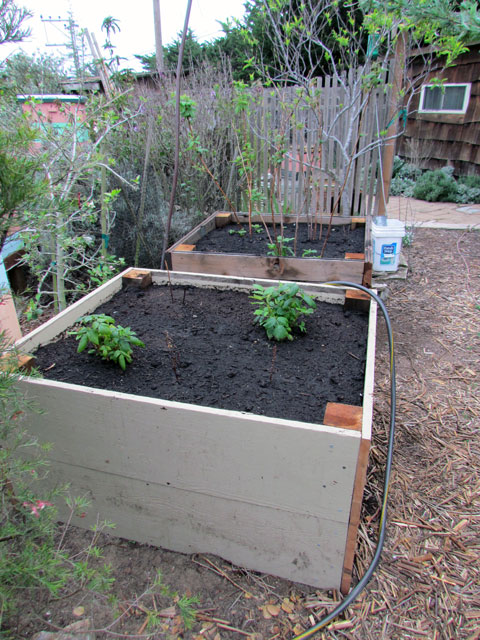
Of course, there were some volunteers from the home compost that appeared shortly after planting. One tomato was allowed to fill a corner of a bed and so tomatoes were harvested from the bed in the first year as well. Now the bed is so filled with raspberry canes that there is no root room for much else to get started.
The raspberries are beginning to travel outside of the bed but the maintenance of removing runners has been minimal. These beds are hand watered, but thinking that some drip automation would free up my time and probably give a better crop. I do top dress seasonally with straw, manure or more compost depending on availability.
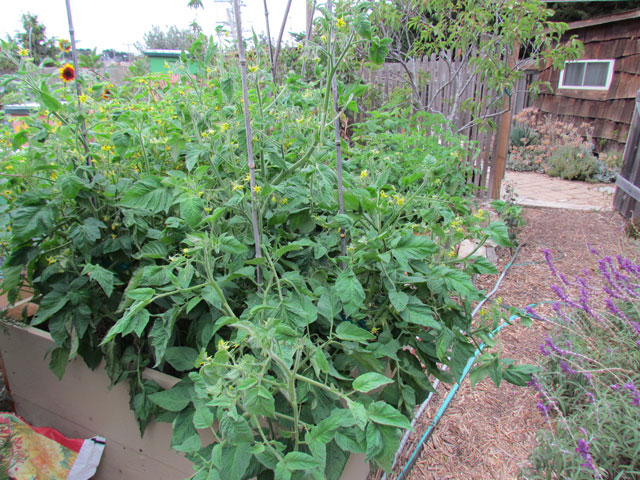
Overall, the raspberries were a good addition to the garden. Other than watering, not too much else is required. The gophers have not been able to get in, and, the birds would rather eat the blueberries. There has been a minimal bit of leaf roller caterpillar damage seasonally. This coincides with nesting season and we have observed birds investigating the undersides of every leaf to find treats for fledglings. So maybe the bird foraging is controlling a possible larger outbreak here
